Insiders Looking Out: An Evening of Native Performance with William Yang
Writer Minnie Two Shoes offers a dispatch from the landmark collaborative performance in March which paired the skills of Minnesota's Native musicians, poets, and performers with the talents of acclaimed Aussie storyteller William Yang.
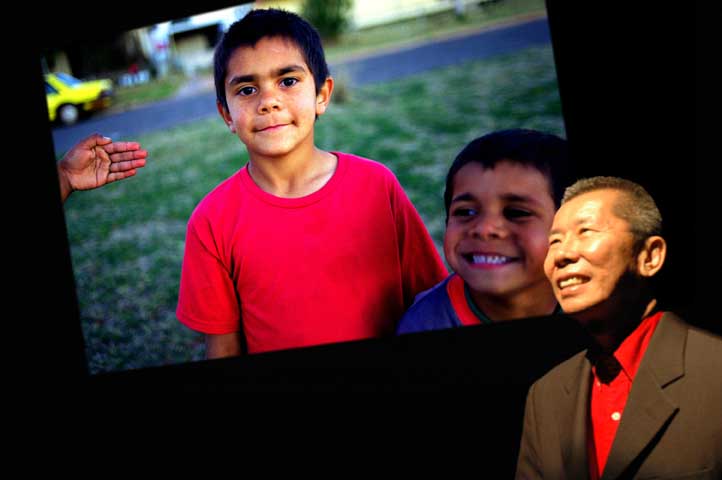
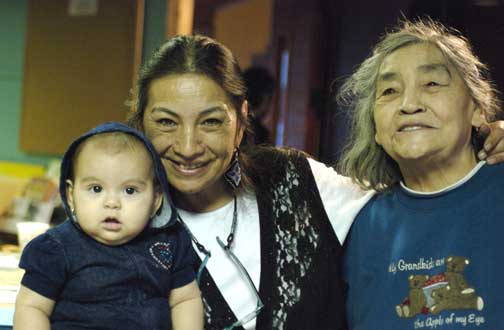
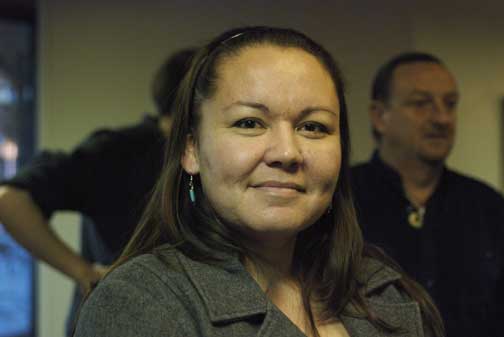
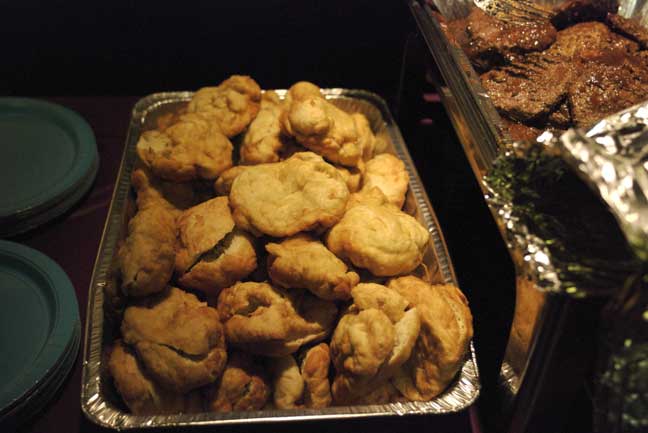
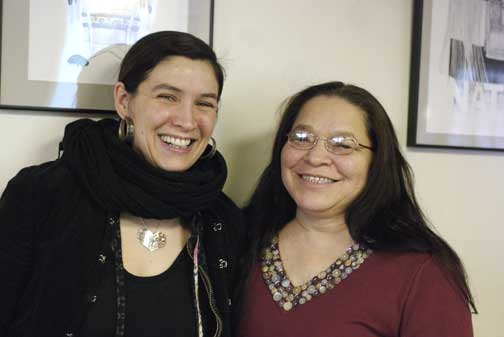
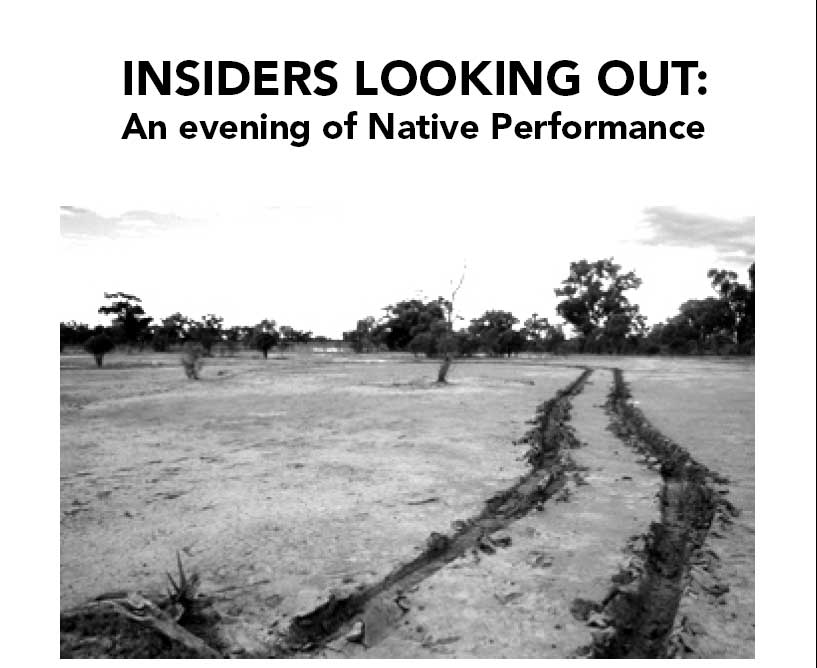
As the voices of an Ojibwe elder and the sounds of his hand drum echoed softly from Two Rivers Gallerys art-covered walls at the Minneapolis American Indian Center, a community welcomed two Australian artists.
People and their bonds to the natural world are an integral part of art, music, and performance. Those elements blended easily as a range of artists provided interpretations on the theme of the early March event, Insiders Looking Out: An Evening of Native Performance.
The evening’s organizer and event curator, Marcie Rendon, is an Anishinaabe playwright and writer. Under her guidance, local artists were selected for the event and diversity was a factor in her criteria for selection. I tried to find talented people who dont always get invited to show up for these kinds of things, says Rendon. I looked for people who were off the beaten path, that had a broader perspective and who were community based.
The night’s line-up included:
Anishinaabe hand drummer/storyteller, Mark Erickson
Anishinaabe poet/spoken word performer, Sarah Agaton Howe
Aztec modern dancer, Dorothy Lerma
Ho-chunk performance artist, Kohl Miner
Kuna/Rappahannock musician/storyteller, Raphael Syzkowski
In addition, this community of performers welcomed Australians William Yang, a Chinese award-winning photographer, and Colin Offord, a musicianboth in town to perform Shadows, a music and slide show that chronicles the often unjust lives of Aboriginal and immigrant families in Australia, at the Walker Art Center’s Maguire Theater.
After greetings from Rendon, Leech Lake OJibwe Mark Erickson took to the impromptu stage. Soon the room with 18-foot ceilings was filled with his deep, clear voice in songs, accompanied with a hand drum.
A Minneapolis resident, Ericksons nearly blind, yet he gets around nicely with the help of his wife of 27-years, Eliza. Interviewed later, Erickson said hed spent half his life on the powwow trail. He describes his performance as freestyle with Ojibwe language. Further, he says with a chuckle, Most wont understand it, those that do will probably be offended. Aaaa!
Erickson was amused to find the event welcomed Australians, as hes been there twicethe hat he wears and is rarely seen without is from Australia. Its traditional Aboriginal, its an Akubra hat, like the one Crocodile Dundee wore but made by an Aboriginal. Its brought me luck.
Next up to perform with poetry was Sarah Agaton Howe of the Fon du Lac Ojibwe. Shes a 31-year old spoken word artist who beads and sews when not attending to her one-year-old son. Her first poem, We’re Not In Kansas Anymore, was a moving metaphor to the stereotypes of Native people as symbolized by the monkeys in the film, The Wizard of Oz. Howe then moved on to a somber, untitled poem that looked at the role depression plays in life, although she commented when finished that: I changed it from when I first wrote it. I had to put it past tense because dont feel that way anymore. Finishing off Howes set was Star Spangled Banner, a look backward at 1492, the Louisiana Purchase, and other fateful times and events. Fragments of her words lingered in my consciousness with a quiet resonance: knick knacks on a shelf/ a reminder of whats in the past. For the sake of future generations, she aptly asked America and its people to undergo a psychiatric examination of your historic amnesia.
Then William Yang came forward. His art is many things but, at its core, his show Shadows is about racism against the Aboriginal people of Australia. These issues affect all the continent’s ethnic groups, he said, and it’s an important factor that warps the way Australia’s people deal with one another. As a slide show of his family members offered stark contrast to his soft words, Yang spoke of growing up with Chinese ethnicity in Australias predominantly Anglo population. When he became a teenager, he realized he was gay, which only added to the onus he felt as a member of a minority population.
In the ’70s he told his family he was gay. It was at about that time that he started to take photographs and began traveling, what he called, halfway down the path as an artist. He didnt go any farther down that path, said Yang, until thirteen years later when he, came out as a Chinese in a photo wearing traditional garb. My life as a photographer who was gay had politicized me and I became a born again Chinese.
In the ’80s he began a slide show with music that eventually evolved into one of his first success stories as an artist. It told of my life, my story of coming out as gay, of coming out as Chinese, even though I knew it would horrify my mom, said Yang. His work there would eventually lead to the creation of his critically acclaimed Shadows.
Changing the pace of the gathering, next up was a dancer. Using hand gestures, posture, bare feet on the carpeted floor and the musics rhythm, Dorothy Lerma transported viewers to another place. She said she danced to thank all the grandmothers for being here. Lerma credits her Azteca heritage with giving her the inspiration to present what she called experimental dance with modern music. Music guides your spirit, said Lerma, You just have to allow it to move you.
Colin Offord, the visiting musician with Yangs Shadows team, gave the crowd a glimpse of his music, known for its homemade and unusual Aboriginal instruments and singing style, complete with chest thumps. A quiet gasp ran through some of the Minnesota-based Native audience when Offord produced an eagle feather with holes drilled into it that he used as a flute. Talk later had some wondering if that, too, was an Aboriginal Australian practice, although no one knew with any certainty.
Next in the line up was Wisconsin Dells Ho-chunk Kohl Miner, who recently moved to the Twin Cities. In the few months since, hes appeared at several venues, after a sixteen-year break from entertaining. Ive been performing on and off for years, he said. In a laughter-filled presentation, Miner told stories of his life. He finished with an excerpt from his work Native Fruit, about a wedding reception at the Coral Bar which ends with three fights, one arrest, two pool games and [where] the bride was nowhere to be found. When Miners not performing, hes the coordinator of the American Indian Land Tenures annual fund raising event and he teaches a class The Art of Giving for the Twin Cities campus of the Fon du Lac Community College.
The finale of the evening was by Kuna and Rappahanock musician Raphael Szykowski, whose music and electric guitar stunned the crowd. Storytelling is his forte and, with his distinctive style and look, he makes entertaining seem easy. Exploring the question of stories as songs or songs as stories, he tells a compelling tale of what an unnatural diet has done to Native peoples health. I gave up fry bread…, he sings, “Powwow foods going to be the death of me. Raphael was raised with the cutting edge of Native theater an everyday part of his lifehe has several relatives who were members of the New York City-based Spider Woman Theater of renown. After only three songs, he ended with “Educated Arrogance” a tongue-in-cheek look at the experience of modern-day Natives that is still relevant, although he wrote it twenty years ago. In it, Raphael takes to task so-called experts in Native culturewith New Agers, hippies, and pseudo shamans all feeling the lash of his wit.
Interviewed days later, Rendon said she was pleased with community turnout and response to the event. Shes done the curation for similar events recently, including the upcoming theater festival Spirit in the House!. She finds the ability to showcase Native talent an unexpected perk after years as an active and recognized artist. I try to encourage young people, said Rendon. The biggest problem she sees for all artists, old and new, is the lack of venues for performance art. She’s been a fan since 1991, when she saw her first Native American woman in a play. I was blown away!
Thank goodness for that! In the early March event featuring Native performers with William Yang’s troupe, she successfully passed on her 1991 epiphany about the value of this kind of performance art to an appreciative MAIC audience, because they too were blown away.
About the author: Minnie Two Shoes is a freelance writer based in the Twin Cities.